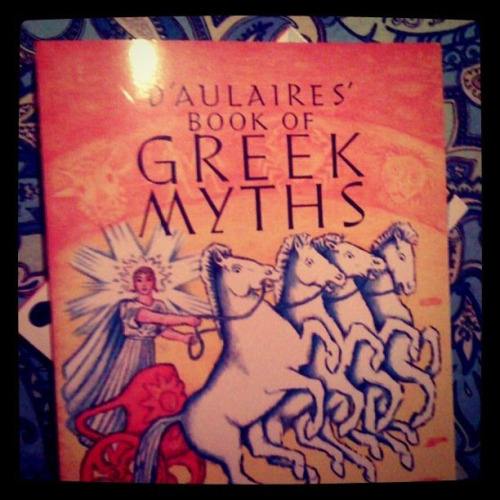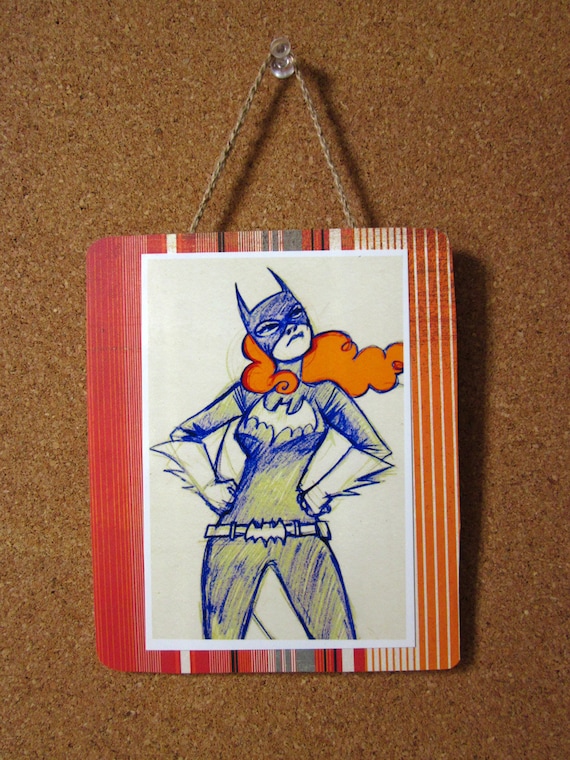Gods & Undergrads Update!
/Click here to read!

Gods & Undergrads Update!
/Click here to read!

Mailing List Time
/I created a mailing list for those of ya who want to get notified of new stuff I have coming up, discounts, or just want to join in the conversation! Click here to sign up. :)
Webcomic Week Day 5: The Weak Spots
/Okay, here we go. Let's do this. Let's talk about the areas that I really hate drawing, therefore suck the most when I draw them - aka my weak spots.

As you can tell from this picture, my weak spots are most definitely backgrounds. A lot of artists have areas they particularly dread drawing. Some are hand-phobes, other face-phobes, I am a background-phobe. Filling backgrounds with people and objects and *shudder* perspective never ceases to paralyze me. As you can tell from these next few shots, the beginning of Gods & Undergrads was chock full of poorly planned, horribly executed backgrounds that I really gave a crap about and boy does the sloppiness show ...
Everything I drew seemed like it's own little lesson in What Not To Do as an artist. If there was a comic equivalent of Stacey & Clinton, they would haul me off to New York and give me an illustration renovation STAT. Actually . . . who would the comic makeover king and queen of the comics world be? I already have a list going of the hottest comickers. But the ones with the ability to makeover others? Hmm. I smell an industry need, waiting to be filled ...
Anyway. So why am I showing you multiple examples of horrible drawing in my own book? Because when you create any comic, or webcomic, or story, or art, or what have you, it's important to face your fears. Sure, I did a lot of terrible backgrounds (and still do sometimes), but like with the writing, I kept doing them until they gradually got better. Look, at the end of the first book the backgrounds had already improved:
And by the second book? LIGHTYEARS better.
I'm not saying I don't still have loads of work ahead of me in the Backgrounds Arena. But once I realized that backgrounds were just as much an important part of the story as the facial expressions, the color, the dialogue, the outfits, etc. the comic started to evolve just from being an amateur mish-mash into an actual evolving style. One I didn't plan on, but one that was slowly becoming more cohesive.
Last year, when I started illustrating my first graphic novel for a publisher, my editor gave me some notes on how all of my panel compositions were starting to look the same - headshots, waist up shots, ALL people, all the time. My old nemesis was creeping up on me and not only making me steer clear from drawing backgrounds, but skewing the page layouts of the book too. So was I going to take that shit from backgrounds? Oh hell no. Sure, perspective still boggles my mind and dressing a scene can cause me to break out into cold sweats, but with a little patience, a lot of stress coffee drinking, and this book:
it's gotten MUCH better.
Webcomic Week Day 5: The Weak Spots
/Okay, here we go. Let's do this. Let's talk about the areas that I really hate drawing, therefore suck the most when I draw them - aka my weak spots.

As you can tell from this picture, my weak spots are most definitely backgrounds. A lot of artists have areas they particularly dread drawing. Some are hand-phobes, other face-phobes, I am a background-phobe. Filling backgrounds with people and objects and *shudder* perspective never ceases to paralyze me. As you can tell from these next few shots, the beginning of Gods & Undergrads was chock full of poorly planned, horribly executed backgrounds that I really gave a crap about and boy does the sloppiness show ...
Everything I drew seemed like it's own little lesson in What Not To Do as an artist. If there was a comic equivalent of Stacey & Clinton, they would haul me off to New York and give me an illustration renovation STAT. Actually . . . who would the comic makeover king and queen of the comics world be? I already have a list going of the hottest comickers. But the ones with the ability to makeover others? Hmm. I smell an industry need, waiting to be filled ...
Anyway. So why am I showing you multiple examples of horrible drawing in my own book? Because when you create any comic, or webcomic, or story, or art, or what have you, it's important to face your fears. Sure, I did a lot of terrible backgrounds (and still do sometimes), but like with the writing, I kept doing them until they gradually got better. Look, at the end of the first book the backgrounds had already improved:
And by the second book? LIGHTYEARS better.
I'm not saying I don't still have loads of work ahead of me in the Backgrounds Arena. But once I realized that backgrounds were just as much an important part of the story as the facial expressions, the color, the dialogue, the outfits, etc. the comic started to evolve just from being an amateur mish-mash into an actual evolving style. One I didn't plan on, but one that was slowly becoming more cohesive.
Last year, when I started illustrating my first graphic novel for a publisher, my editor gave me some notes on how all of my panel compositions were starting to look the same - headshots, waist up shots, ALL people, all the time. My old nemesis was creeping up on me and not only making me steer clear from drawing backgrounds, but skewing the page layouts of the book too. So was I going to take that shit from backgrounds? Oh hell no. Sure, perspective still boggles my mind and dressing a scene can cause me to break out into cold sweats, but with a little patience, a lot of stress coffee drinking, and this book:
it's gotten MUCH better.
Webcomic Week Day 4: Planning vs. Evolution
/Yep, it's not really Day 4, since Webcomic Week started last week ... oh well, continuity blows! ... Aaaand also happens to be the topic of this post. I've been writing terrible stories since I was little. Luckily I didn't let that deter me. I had a screenwriting teacher in college who told us flat out:
Everything you write will be shit.
And she was spot on. But luckily she added:
If you keep writing, it will become less shitty.
That's the motto I've clung to over my years of writing several short comic stories and one looooooong comic story. If I keep writing, in theory the writing gets better. Or, rather, it gets less shitty. I used to think when you wrote out a story, you had to plan everything in advance before you started drawing. This thought managed to paralyze me and prevent me from ever writing fully fleshed out stories. When I started Gods & Undergrads, my detailed plot points looked like this:
- There is a girl.
- She is the off-spring of some gods and stuff.
- She's going to be at college doing college-y things.
- Now and again a god will come in and mess everything up.
- The end.
The inbetweens I wasn't able to quite figure out until I started writing the story. Occasionally I'd randomly decide upon bigger events I wanted to happen (she breaks her arm, Furies are called, etc.) and then would be able to steer the story in those specific directions. Sometimes I worried that all I was doing was spinning my wheels and putting in filler between big, random events. I kept thinking my job as a writer was to keep the reader occupied and unassuming until BAM! The next plot point came around.
Unfortunately, this resulted in a lot of my earlier (okay, truthfully, and current) work occasionally slogging through some slow parts. In these slogs, nothing much happens plot-wise, but at least the characters do take the opportunity to become more developed and separate their personalities from one another. Intially created out of laziness, over time I realized this truly was a storytelling preference of mine. I gravitate towards stories with a sloooowwww burn, all build up and pretense and atmosphere. And most of the time I don't even care if there's a BAM ending (or hell, even an ending at all), I just like to sit and immerse myself in that world for a little while. To me, it adds to the experience of getting into a story. Mm, maybe half that and half laziness.
Over the years my haphazard storytelling method has had to evolve, and I've developed a system I'm pretty comfortable with.
- The story idea arrives (usually in the car, or during a meeting, or some other time when I'm generally supposed to be otherwise engaged)
- I jot down notes, sketches, snippets of dialogue - whatever keeps me thinking of the idea
- I start to storyboard (I go into this process in further detail here), and depending on whether or not I have a deadline, I'll do this right away or take my time
- I back WAY the hell off
- I return to storyboarding
- Repeat steps four and five
Step 4 is what saves me from getting stuck in a story rut or getting bored or throwing shit in the story just to fill it out. I find that if I just physically leave my work, my mind kicks into gear and comes up with way better stuff than if I'd still been sitting there, staring at the paper. The same theory works for me when I draw my pages - if I'm getting bogged down, feeling uninspired, have no clue how to draw this next thing - LEAVE THE DESK. I go get some coffee or candy or let my cat attack me. As the Ghost Hunters say (that's right, I referenced them): When in doubt, get the hell out.
So whether your method is of the JK Rowling variety (I can't even fathom the amount of detail she has in her notebooks) or if you're like me and have trouble staring at Big Scary Story's Monster Face all at once, there is a method for you. I find the best way to keep yourself motivated is to lean toward your strengths. Do whatever you need to to keep yourself going and being excited about the idea. If you're no longer excited, switch gears and try something else. Or go let a cat attack you.
Webcomic Week Day 4: Planning vs. Evolution
/Yep, it's not really Day 4, since Webcomic Week started last week ... oh well, continuity blows! ... Aaaand also happens to be the topic of this post. I've been writing terrible stories since I was little. Luckily I didn't let that deter me. I had a screenwriting teacher in college who told us flat out:
Everything you write will be shit.
And she was spot on. But luckily she added:
If you keep writing, it will become less shitty.
That's the motto I've clung to over my years of writing several short comic stories and one looooooong comic story. If I keep writing, in theory the writing gets better. Or, rather, it gets less shitty. I used to think when you wrote out a story, you had to plan everything in advance before you started drawing. This thought managed to paralyze me and prevent me from ever writing fully fleshed out stories. When I started Gods & Undergrads, my detailed plot points looked like this:
- There is a girl.
- She is the off-spring of some gods and stuff.
- She's going to be at college doing college-y things.
- Now and again a god will come in and mess everything up.
- The end.
The inbetweens I wasn't able to quite figure out until I started writing the story. Occasionally I'd randomly decide upon bigger events I wanted to happen (she breaks her arm, Furies are called, etc.) and then would be able to steer the story in those specific directions. Sometimes I worried that all I was doing was spinning my wheels and putting in filler between big, random events. I kept thinking my job as a writer was to keep the reader occupied and unassuming until BAM! The next plot point came around.
Unfortunately, this resulted in a lot of my earlier (okay, truthfully, and current) work occasionally slogging through some slow parts. In these slogs, nothing much happens plot-wise, but at least the characters do take the opportunity to become more developed and separate their personalities from one another. Intially created out of laziness, over time I realized this truly was a storytelling preference of mine. I gravitate towards stories with a sloooowwww burn, all build up and pretense and atmosphere. And most of the time I don't even care if there's a BAM ending (or hell, even an ending at all), I just like to sit and immerse myself in that world for a little while. To me, it adds to the experience of getting into a story. Mm, maybe half that and half laziness.
Over the years my haphazard storytelling method has had to evolve, and I've developed a system I'm pretty comfortable with.
- The story idea arrives (usually in the car, or during a meeting, or some other time when I'm generally supposed to be otherwise engaged)
- I jot down notes, sketches, snippets of dialogue - whatever keeps me thinking of the idea
- I start to storyboard (I go into this process in further detail here), and depending on whether or not I have a deadline, I'll do this right away or take my time
- I back WAY the hell off
- I return to storyboarding
- Repeat steps four and five
Step 4 is what saves me from getting stuck in a story rut or getting bored or throwing shit in the story just to fill it out. I find that if I just physically leave my work, my mind kicks into gear and comes up with way better stuff than if I'd still been sitting there, staring at the paper. The same theory works for me when I draw my pages - if I'm getting bogged down, feeling uninspired, have no clue how to draw this next thing - LEAVE THE DESK. I go get some coffee or candy or let my cat attack me. As the Ghost Hunters say (that's right, I referenced them): When in doubt, get the hell out.
So whether your method is of the JK Rowling variety (I can't even fathom the amount of detail she has in her notebooks) or if you're like me and have trouble staring at Big Scary Story's Monster Face all at once, there is a method for you. I find the best way to keep yourself motivated is to lean toward your strengths. Do whatever you need to to keep yourself going and being excited about the idea. If you're no longer excited, switch gears and try something else. Or go let a cat attack you.
TV Sketches
/Totally obsessed with re-watching all of Wonderfalls lately. It contained so many qualities I look for in a show - eccentric characters, slapstick, plot twists, and of course, cute boys:

I apologize for the abrupt interruption of Webcomic Week last week - it was derailed by the fact that it was my birthday and I decided to stretch out the celebrating as long as I could. But I'll post the next entry later today!
Bonnie N. Collide update!
/Click here to see!

Gods & Undergrads Update!
/Click here to read!

Webcomic Week Day 3: Kooky Character Development
/Characters are my favorite part. I love me some gorgeous backgrounds, and slow-moving storylines, but characters are truly the bees knees. I've been watching a lot of Gilmore Girls re-runs lately and there's something about the combination of every single weirdo in Stars Hollow interacting that just does it for me every time.

Anyway, enough about those Lorelei's. When I set out to create a cast of characters for my webcomic, I started off with real people influences. My first two years at college I lived at home. When it was finally time for me to move out and be closer to campus, I was dismayed that I was too late to actually live on campus. A friend of mine, who I viewed as glamorous, fearless, beautiful, and punky, had a place on campus with a fellow member of the school swim team. I'd imagined that maybe, somehow, I'd luck into being their third roommate and they would teach me how to be as efforlessly cool and athletic as them.
Thus, I had created two characters. The awkward newcomer and her cool, worldly roommate. I wanted the reader to be introduced to a year living on campus along with the main character, Lelaina, so within the first few pages I rapidly introduced her new social world:
Lelaina - the heroine. I wanted to make sure she stood out in some way that made her both noticeable and self-conscious. She would embody the characteristics most people feel when they're fresh on a new scene - insecure, naive, and shy.
Anneke - the first person Lelaina meets on campus. Her role for much of the first part of the story, is to introduce Lelaina to her new life. I wanted to make sure Anneke was the opposite of Lelaina - casually confident in a way that Lelaina envied yet couldn't quite understand.
 Anthony - Anneke's older brother. Being the adopted single child of a single parent, Lelaina has no experience with siblings and Anthony represents the link to an unknown world - family.
Anthony - Anneke's older brother. Being the adopted single child of a single parent, Lelaina has no experience with siblings and Anthony represents the link to an unknown world - family.
Lucy - Anneke's other roommate. Lucy and Anneke already have an established bond and Lelaina must figure out where she fits into their dynamic.
 Neil - the first of the three roommates who live on the lower floor. When Neil is introduced, it's clear he's a favorite of Lucy and Anneke, so Lelaina trusts him.
Neil - the first of the three roommates who live on the lower floor. When Neil is introduced, it's clear he's a favorite of Lucy and Anneke, so Lelaina trusts him.
 Sloane - the second roommate, who immediately sets herself apart as being bitchy and critical of Lelaina. She's the first real antagonist we see in the story.
Sloane - the second roommate, who immediately sets herself apart as being bitchy and critical of Lelaina. She's the first real antagonist we see in the story.
 ... Aaaand finally, Linden - the third roommate, and our man meat for Lelaina to gaze upon. You need a love interest, right? Like most people who go off to college, Lelaina latches on to the first (okay, third after Anthony and Neil) as her crush-to-be.
... Aaaand finally, Linden - the third roommate, and our man meat for Lelaina to gaze upon. You need a love interest, right? Like most people who go off to college, Lelaina latches on to the first (okay, third after Anthony and Neil) as her crush-to-be.
So now you have all these characters, then what? When I started writing the story, I didn't plan out: Okay, I need 1 main character plus 3 girls and 3 guys. I knew I wanted Lelaina to get thrown into a social scene as an outsider, and see what happened from there. Then, as she was finding her way and making new friends and they started trusting her, I would add a Greek God or two into the mix.
This allowed me to really play with the characters - instead of the story following just a slice-of-life thread, I could figure out how each character would react to abnormal circumstances. Say, waking up to a drooling Fury crouched over you in the middle of the night. Y'know, stuff like that. But first I had to get to know them.
The important thing, for me, about character development is that you can only set them up so far. When I planned out my characters, the list above is as far as I got. Once I started writing the scenes, they started to develop and separate from one another on their own. It wasn't necessary for me to make a smart one, a pretty one, a sarcastic one, a bitchy one (well, okay full disclosure - Sloane's the bitch). They could all be all things at any time, depending on what situation they ran into.
So I try for a simple set up and then let the personalities roll out from there. I've created more extensive character sketches before writing the story, but the result is the same - as the story continues, they all morph into whatever they want to be, which doesn't necessarily have anything to do with my intent in creating them. Weird, right? This is why it makes perfect sense to me when Daffy Duck gets into a fight with his animator.
[youtube=http://www.youtube.com/watch?v=ttmHmy6svWs]
How do you guys go about creating your characters? Any particular philosophies you apply to them before you start, or do you just wing it, like me?
Bonnie N. Collide Update!
/Click here to read!
Bonnie N. Collide Update!
/Click here to read!
Webcomic Week Day 2: Story Planning
/After graduating from college, I lingered in the academic world for a few months, holding desperately onto my receptionist job in my school's Art Department for as long as I could muster. When there were lulls, in between buying posters of The Royal Tenenbaums or checking out a Lord of the Rings blog (told from the perspective of all the guys competing with Legolas's prettiness) I explored the wonderful, wide world of webcomics. Each of the ones I regularly checked in on left me with a Format Idea, in one way or another:
- Scott McCloud's Zot showed me the limitless possibilities of "the infinite canvas" of websites
- Jason Little's Bee Comix dazzled me with its color
- Derek Kirk Kim's Same Difference impressed me with carefully crafted panels
I kept pulling little influences from the various things I was reading, trying to piece them all together into a story that I wanted to write. Not just write - but read. And convince myself this was a worthy thing to do. (Note to future webcomickers - never let yourself worry about what's already out there or everyone who's better than you is already doing it - just keep going and dig yourself a little niche of your own!)
Apart from webcomics, I was also heavily influenced by Terry Moore's Strangers In Paradise, which taught me that a world featuring an angry, beautiful, tiny yet vicious female protagonist was possible.
THEMES
Things I knew I wanted to include in the story (overall):
- Strong female protagonist
- Meddling gods
- A snapshot of life as an outcast at college
- Discovering who you are at the same time you're expected to map out your life plan
- Comparing the similarities between modern life and greek mythology
STRUCTURE
So once I had my Format Influences, and my Themes to include, I had to think about Structure. I tried a couple of different angles to approach my story:
- Start off with a teaser scene - something powerful and random, that could slowly be revealed over the rest of the story.
- Start after a major incident had happened, then over the course of the story, refer back to it.
- Start right at the beginning - introduce the main character as she's being introduced to a new school year and living situation.
After a lot of wasted paper and ink and notes (since I had so foolishly plunged headlong into #1 and #2), I started my 3rd attempt at story telling. I didn't bother worrying too much about planning out all the details, I just wrote. This was the first inkling I had as to what motivates me, personally, as a writer. If I'm dragging my feet on the story, or the dialogue, or the scene, then I'd better change it. There's no slogging through a part just to get to the cool ones - if you're slogging, your readers are giving up on you.
And again - this week is mainly about my process as a writer/comicker, and how I navigated through the process of creating my first webcomic. By no means is this a how-to for budding comickers! ... More like a cautionary tale. :)
Altogether, I had my format (utilize the vertical infinite canvas, add color, try to structure the panels as neatly as I could), my themes, and my structure. Next step - character development!
Webcomic Week Day 1: My Obsession With the Subject Matter
/I already mentioned in this post how I've been obsessed with Greek Mythology for a while now. I believe it started with this book:

And then it grew into an uncontrollable gorging every time I went to a thrift shop with a book section:
And peaked when I tagged along with my college's Ancient Studies Club to go to a trip to Greece in 2000.
Why was I so obsessed? Here's the thing. I was raised Catholic. Holy communion, weekly Mass, confirmation, awkward Sunday School taught by my father - the whole bit. And I knew I wanted to believe in some aspect of religion and myth and legend - just not all of it. Some parts were fun and story-tastic and awesome. Others, not so much. What I was really lacking in my religion was variety. All I saw were contradictions - think this way but act another, strive for this even though you'll never ever get there, hate yourself, love everyone in theory but also judge them, etc. etc.
Then middle school and sixth grade English and Greek Mythology entered my life. Two elements getting it on, twelve titans, twelve Olympians, nine muses, three fates, three graces, three furies ... and a plethora of combinations and gods for every possible thing you were into. The more books and epic poems I read, the more I established my own opinion on what each of the gods were like. I kept trying to rationalize their behavior and give them personalities beyond what I'd read, so they'd fit into what I wanted them to be. It wasn't very difficult, which proves why they've stuck around in modern culture for so long.
- Zeus - the lecherous dad. All-powerful, but also full of heart. Has a lot of trouble saying no - to women, children, and humans. The stepfather you'd like to have.
- Hera - the politician's wife. Established and wise on her own, but continually forced to react to her husband's distracting and obvious affairs.
- Poseidon - the brother who disowns his family. The stories say Zeus split up the world and gave Poseidon the seas and Hades the Underworld - I say he chose so he could cultivate his own world. He basically packed up and moved to the opposite coast from the rest of his family, so he could use that as an excuse for never visiting.
- Hades - the younger brother who wants to do something "different" with his life. Hades is often painted as evil, bitter, and jealous of Zeus and Poseidon. In my mind, he made it seem like he got the short end of the stick when all he really wanted was to explore his dark side and be feared.
- Athena - the daughter Zeus is so glad he had. Burdened with being the responsible one all the time, never allowed to cut loose and randomly murder a bunch of people like her siblings.
- Ares - the son who's belligerent and starved for attention. He makes sure everything he does is loud and noticeable.
- Hestia - the quiet homebody. She tends the fire, she respects home life. Therefore, no one wants to talk to her.
- Demeter - the hippie mom. So distraught by what happens to her daughter Persephone that she's forced to become the overprotective mom she always had in her.
- Apollo - the golden child. Zeus is eternally proud of him and he manages to rock the poet/artist that every woman (and man) lusts after. Chill, bright, his life is golden.
- Artemis - Apollo's realistic twin, she sees shit how it really is, and knew long ago to pull the cord and go live in the forest with a bunch of ladies. Lesbian to the core.
- Hermes - the fun-loving gossip. Got to deliver everyone's news and was clever enough to pull practical jokes on the other gods and not get murdered for it.
- Aphrodite - everyone's favorite. Cynical, business-minded, but also kind of a sap.
So what do you do with all this lovely subject matter, which has already been tackled to death in every possible form wayyyy before you were born? You find some way to express your love and interest in it, using the tools at your disposal.
Tomorrow! Turning ideas and wishful thinking and a love of comics into story.























